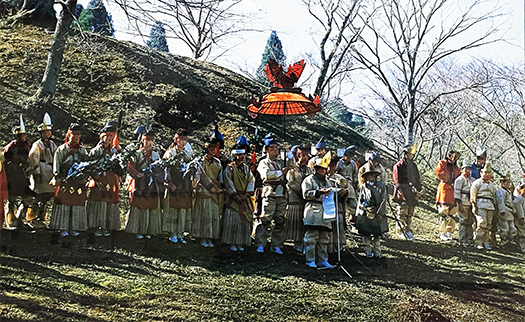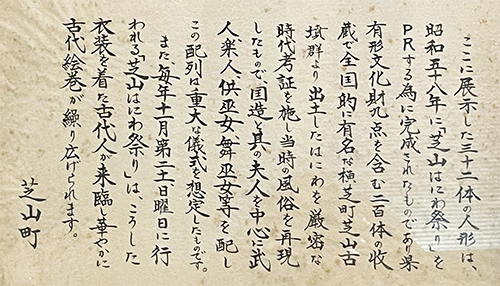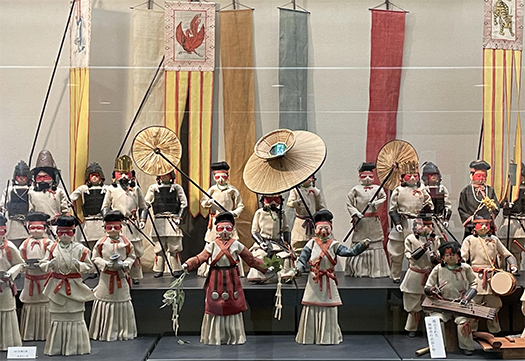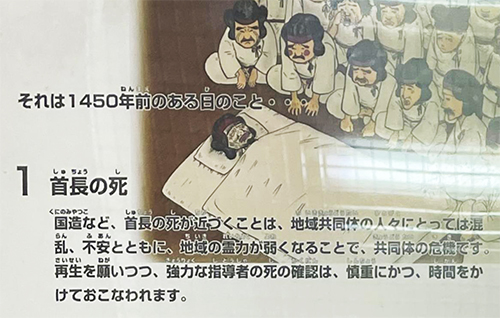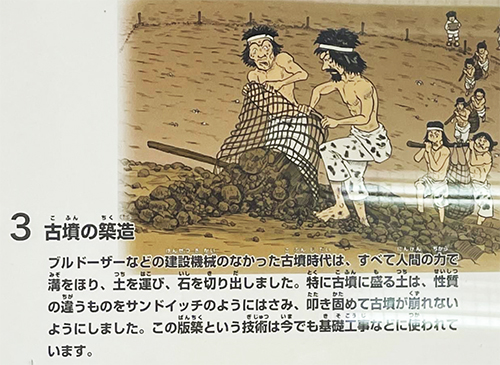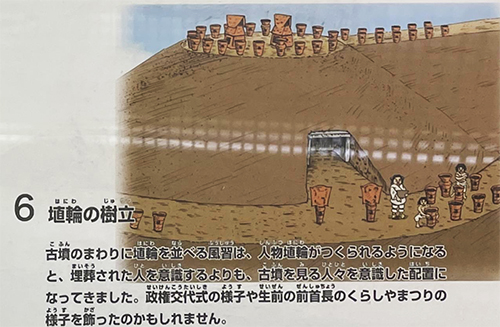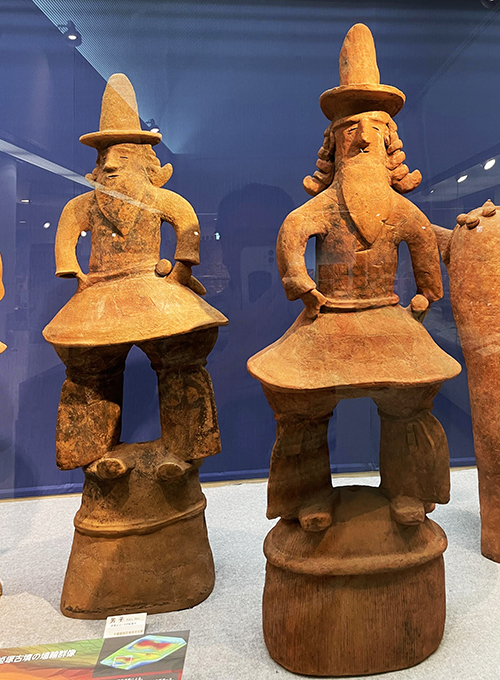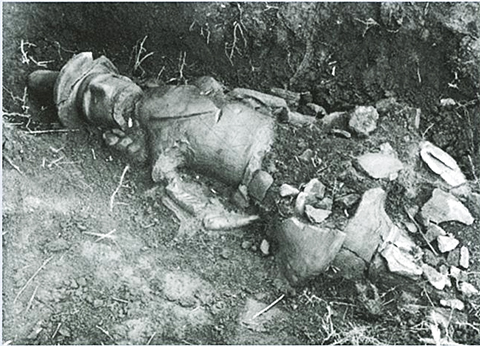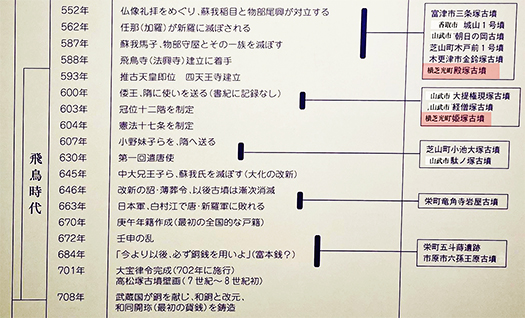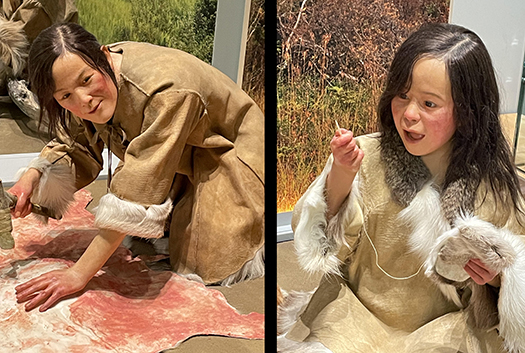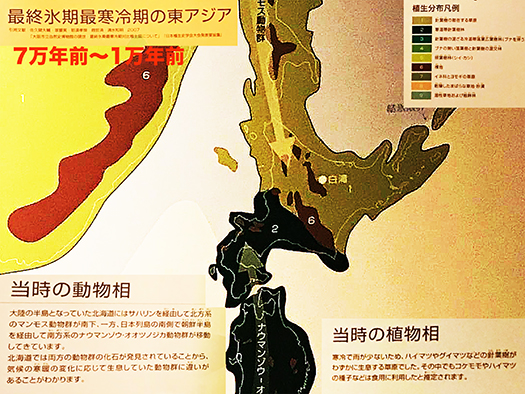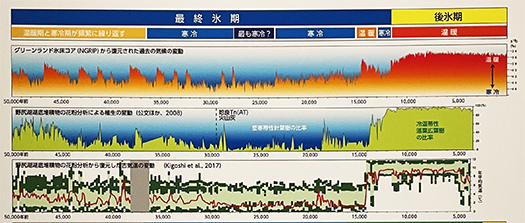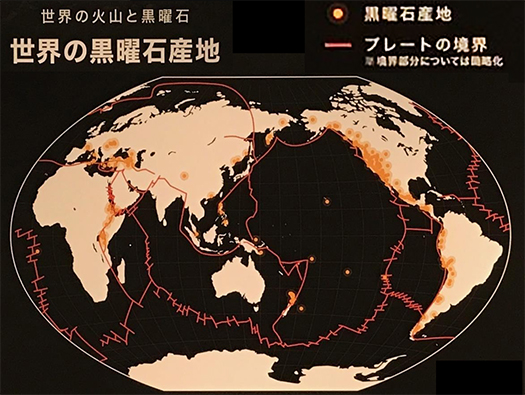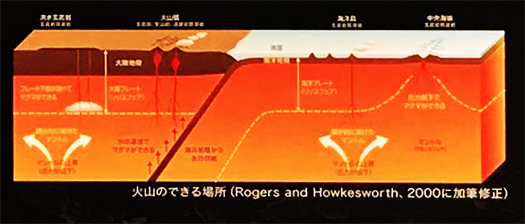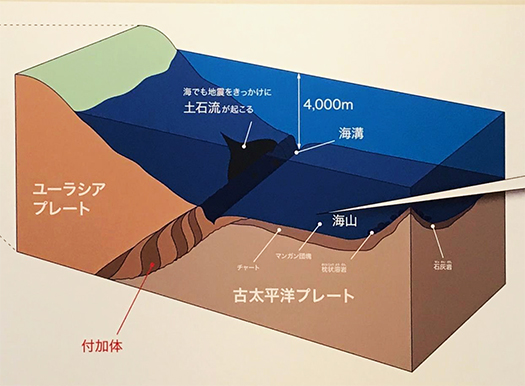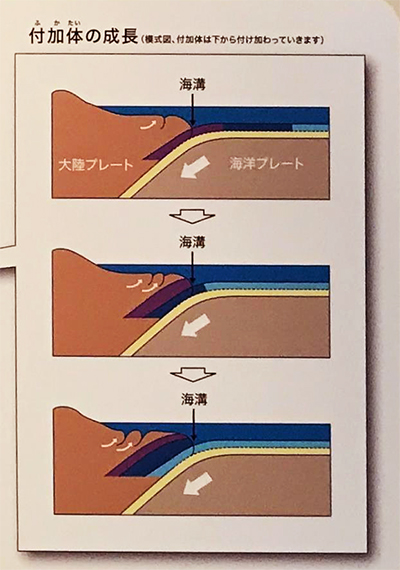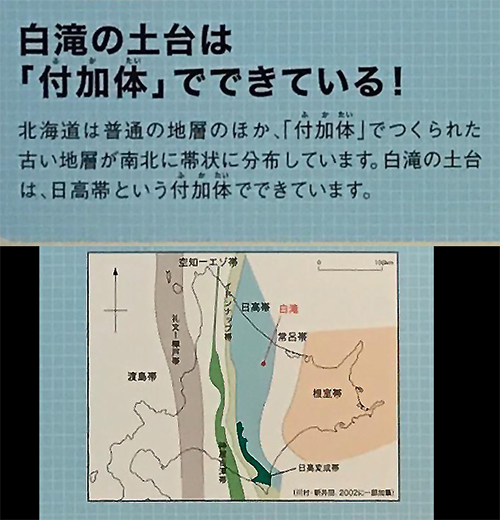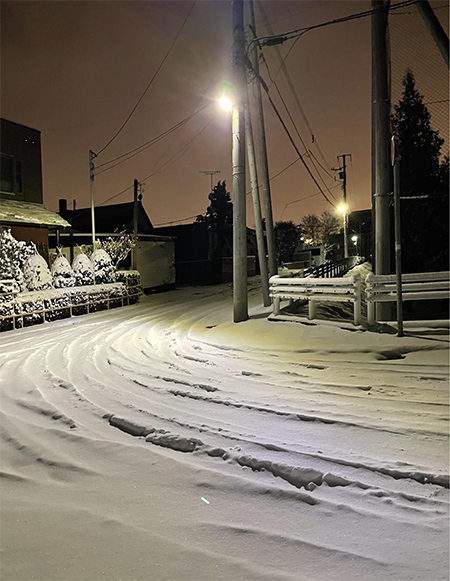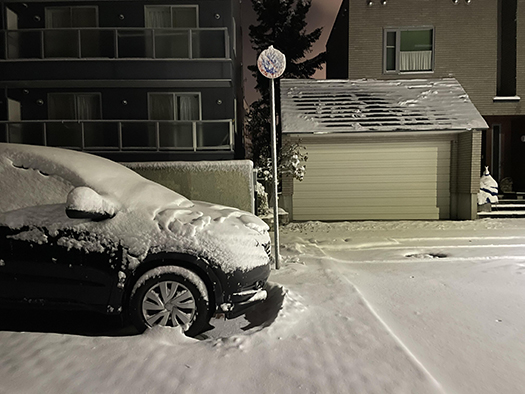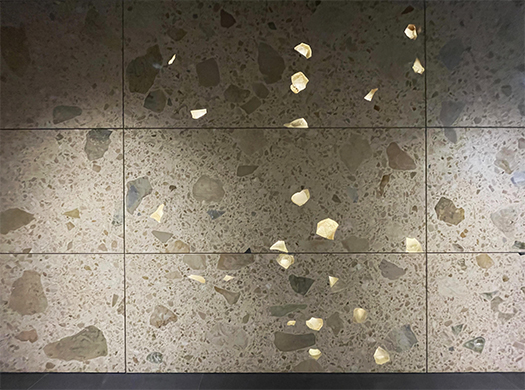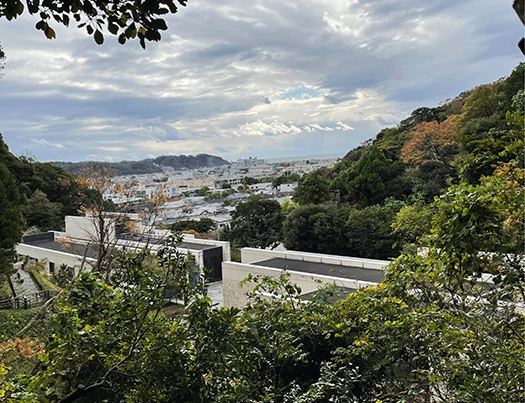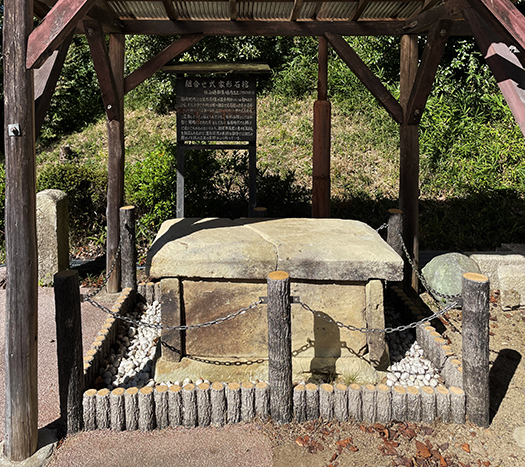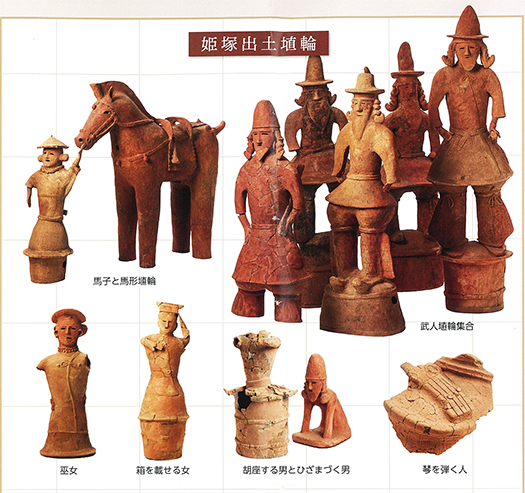
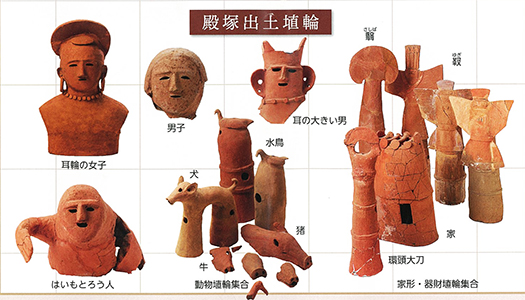
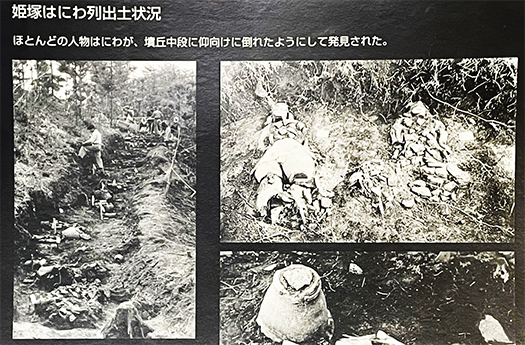
さて房総の武射(むさ)の国造(くにのみやっこ)の権威象徴として造営されたことが想定される殿塚・姫塚古墳について考えてきましたが、どうしても不可思議なのが、この古墳独特のはにわ造形表現であります。
前述の東北大学・田中英道先生の主張の根拠とされているわけですが、いまのところ、形状的な同一性が認められるという以上には明白な根拠は示されていないようです。ただ、古代の日本列島社会は多様なフロンティア移住民を受け入れてきた社会だっただろうことはあきらかなので、まったく荒唐無稽な論だと決めつけることもできない。ある特定の衣装文化を持った人びとが、この地に入植して自分たちの文化習慣をはにわに形状化したということはあり得る。ただし、そのような事実があったとして、ではどうしてその後の歴史過程で、そういう事実の継承性の確認が認められないのか。また、そういった先祖伝承について有為な事実痕跡が見られないのか、そういった疑問点が大きい。他地域ではそういう事実は神社などで継承されるようなことが多く見られる。そういうことで先生の説については、たいへん刺激的で想像力は揺さぶられるけれど、今後の実証的な事実の検証結果が待たれるというのが自然でしょう。
その上で、上の写真のように「殿塚」と「姫塚」で出土したはにわの種類が違うように思われる。
姫塚には、それを守護するように男性と思われるはにわ像が多く、いかにも女性を護るという男性的な愛情表現とも思える。一方で「殿塚」ではやさしげな女性像や、大刀や鞍、家、動物類、そして男の子などがあったとされている。
被葬者は殿塚には王権の主、姫塚はその配偶者が擬定されるけれど、それぞれにある種の「思い」が感じられる。人間の営為なのでそういった行為への仮託はあったに違いない。
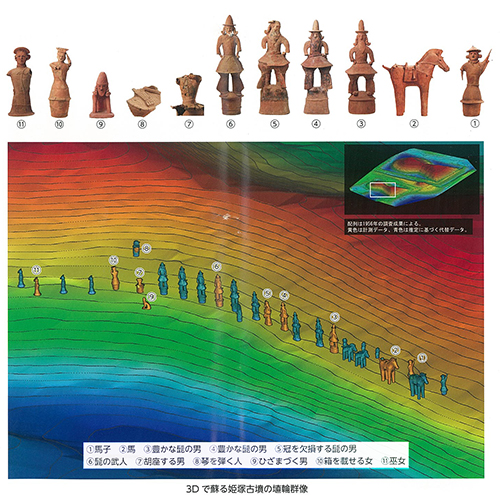
そうしたはにわ群が、古墳の周囲に立て並べられていた。それらは古墳本体に向くのではなく、この古墳を見る視線に対して正面向きに据え付けられていた。被葬者、あるいはその後裔者としては、それを見る人びとに対して、権力の正統性をアピールしたかったのだろうと想像できる。
有為な伝達手段のない時代、民にこういう形而上的な価値感、尊崇の念を抱かせるについてはいろいろな手段手法を考えたに違いない。古墳という葬送形式自体が大規模土木事業であると同時に、後の世の城郭建築・天守閣のような建築装置でもあったのだと思われますね。
芝山町はこうした古墳について、その文化的な側面を非常によく掘り起こして、現代人にもわかりやすく伝える努力を継続していると感じさせられました。
English version⬇
Unique “Jewish” Haniwa Formation Chiba Shibayama Kofun Exploration-4
It is possible that a variety of ethnic groups settled in the Kanto region in ancient times. The haniwa sculpture is reminiscent of the Jewish people, but it is inconsistent with the fact that no other historical traces are found. …
We have been thinking about the Tonozuka and Himezuka burial mounds, which are assumed to have been constructed as symbols of the authority of the Kuninoyakko of Musa in Boso, but what is inevitably puzzling is the unique expression of haniwa (straw hatchet) modeling unique to these burial mounds.
This is the basis for the aforementioned assertion by Professor Hidemichi Tanaka of Tohoku University, but so far, there seems to be no more obvious evidence than the recognition of a shape identity. However, it is clear that the ancient Japanese society must have been a society that accepted a variety of frontier immigrants, so we cannot assume that this is a completely ridiculous theory. It is possible that people of a certain costume culture settled in the region and quickly shaped their own cultural customs. However, if such a fact existed, then why is there no confirmation of the inheritance of such a fact in the subsequent historical process? Also, why are there no significant traces of such ancestral traditions? In other regions, such facts are often handed down at shrines. Therefore, although the professor’s theory is very exciting and stimulates the imagination, we must wait for the results of further empirical verification of the facts.
On top of that, as shown in the photo above, the types of haniwa excavated at Tono-mizuka and Hime-mizuka seem to be different.
In Himezuka, there are many haniwa statues that seem to be male, as if to protect them, which seems to be a masculine expression of affection to protect women. On the other hand, the Tono mound is said to contain statues of gentle women, large swords, saddles, houses, animals, and boys.
Although the interred person in Tono-mizuka is the lord of the kingdom and in Hime-mizuka the spouse of the lord, we can sense a certain “feeling” in each of them. Since this is a human activity, there must have been some kind of temporary commitment to such an act.
A group of such haniwa were lined up around the tomb. They were not facing the main body of the tomb, but were set up in front of the viewers looking at the tomb. It can be imagined that the person who was buried here, or his descendants, wanted to appeal to the legitimacy of their power to the people who looked at them.
In a time when there were no effective means of communication, they must have thought of various ways to make the people feel a sense of metaphysical value and reverence for the burial mound. The burial mound itself was not only a large-scale civil engineering project, but also an architectural device similar to the castle towers of later times.
I was made to feel that Shibayama Town is continuing its efforts to excavate the cultural aspects of these burial mounds very well and convey them in an easy-to-understand manner to people today.
Posted on 12月 2nd, 2023 by 三木 奎吾
Filed under: 日本社会・文化研究, 歴史探訪 | No Comments »


